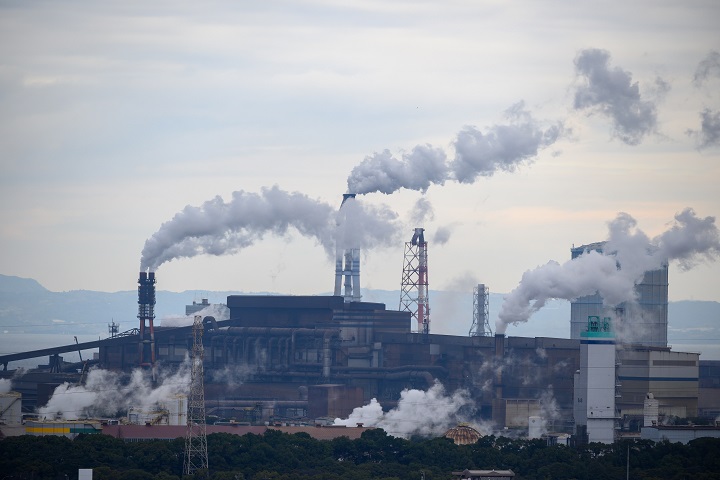PCB exposure has been shown to cause a host of chronic health problems, including cancer and cardiovascular disease. Although PCBs have been banned in many countries, they are still present in the environment and can be found in everyday products.
Understanding how these chemicals affect your body can help you take action to protect yourself. Hence, we will discuss the impact of PCBs on our health in this article.
Table of Contents
1. What Are Polychlorinated Biphenyls (PCBs)?
Polychlorinated biphenyls (PCBs) are a group of man-made chemicals that have been used in many industrial applications. They were first produced and used in the US in 1929. They were used until 1979 when they were finally banned due to concerns about their health impacts on humans and animals.
You may have heard of PCBs before because they’re still found in some consumer products today. If you’ve got an old refrigerator or freezer that needs cleaning out, for example, there’s a good chance it contains PCBs. They were widely used to insulate electrical equipment like those appliances until they were banned from production by law.
2. The Widespread Presence of PCBs
PCBs are a persistent organic pollutant, meaning that they don’t break down easily in the environment. They are found in air, water, and soil. In addition to being widespread, PCBs can also be found in food products like fish and meat.
This has resulted from the dumping of PCBs in water bodies. For example, historical data shows that General Electric dumped around 1.3 million pounds of PCBs in the Hudson River. This has impacted aquatic and human life equally because PCB exposure can lead to severe hazards.
Although PCBs were banned, it is still possible for people who were exposed to PCBs before then to experience negative health effects. Hence, everyone needs to understand PCB exposure symptoms. Knowing the symptoms can help you take appropriate measures quickly before they become severe.
Some of the common PCB exposure symptoms include skin issues, respiratory problems, eye irritation, and gastrointestinal symptoms. Besides that, you can also experience neurological symptoms, elevated liver enzymes, endocrine system disruption, etc. If you are experiencing any such problems, it is advised to consult with your doctor immediately.
3. PCB Exposure Routes
Exposure to polychlorinated biphenyls (PCBs) can occur through various routes. Here are some common exposure routes to PCBs:
- Inhalation: Breathing in contaminated air is a significant route of exposure. PCBs can become airborne through volatilization from contaminated surfaces, especially when older equipment or building materials containing PCBs break down or deteriorate.
- Ingestion: Eating or drinking contaminated food, water, or soil is another common route of exposure. PCBs can accumulate in the food chain, especially in fatty fish and animal products. Contaminated water sources or soil can also contribute to PCB exposure if they contain PCB residues.
- Dermal contact: Contact with PCB-contaminated surfaces or soil can lead to dermal exposure. This exposure route is less significant than inhalation and ingestion but can still be a concern. This is especially true for people who have direct contact with PCB-contaminated materials.
- Occupational exposure: People who work in industries that use PCBs are at risk of occupational exposure through direct skin contact, inhalation, and ingestion.
- Breast milk: Infants can be exposed to PCBs through breastfeeding if their mother has accumulated PCBs in her body. This route is of particular concern because PCBs can be transferred from the mother to the infant.
- Medical devices: PCBs were used in certain medical devices in the past, such as blood storage bags and catheters. Patients who received medical treatments using such devices could be exposed to PCBs if the devices were contaminated.
- Environmental exposure: PCBs can persist in the environment for a long time. Exposure can occur through the consumption of contaminated fish or seafood, contact with contaminated soil, or drinking water from contaminated sources.

4. Health Effects of PCB Exposure
PCBs can have harmful effects on health. The nature and severity of these effects depend on the type of PCB, the dose and duration of exposure, as well as other factors. Because PCBs are similar to other environmental contaminants in their chemical structure and physical properties, they may cause similar health problems.
According to TorHoerman Law, increased PCB exposure can lead to health problems like liver, brain, and breast cancer. It can also result in immune system effects, endocrine system effects, and birth defects. This has also been proved in various studies. Over the years, several studies have proven the connection between PCBs and health risks.
For example, a study from the Environmental Health Perspectives Journal shows that PCBs are strongly associated with cardiovascular risks. Similarly, a study from Scientific Reports shows a connection between PCBs and reproductive health. Another NCBI study links its association with fertility.
5. PCB Regulations and Remediation
PCBs are a group of chemicals that were used in the past for many industrial purposes, including building materials and sealants. They have been linked to a wide range of health effects, including cancer and other serious health problems. Hence, they have been banned in the U.S. since 1979 but may still exist in older products or buildings where they were once used.
In fact, their use has been reduced worldwide. PCBs are a part of the 29 Persistent Organic Pollutants (POPs) regulated under the Stockholm Convention treaty. The treaty is signed by 186 countries to minimize the risk of hazardous pollutants like PCBs.
6. Protecting Yourself and Your Community
As a member of the community, you can take steps to protect yourself and your family from PCB exposure. First, it’s important to understand how PCBs are released into the environment. The most common way that people come into contact with PCBs is through eating contaminated fish that have been exposed to them. You should avoid eating or drinking anything caught in water bodies suspected of having high levels of PCBs.
If you work with chemicals that contain PCBs regularly, you must follow all safety precautions when handling these materials. This includes wearing gloves and protective clothing whenever possible.
If possible, try not to handle the chemical directly at all. Instead, use tools like pipettes so that only small amounts come into contact with your hands at one time. Raising awareness about PCBs and their health impacts is also vital for prevention. Public health campaigns and educational programs can inform individuals about the risks associated with PCB exposure.
Conclusion
We hope that this article has helped you understand the dangers of PCB exposure and how to protect yourself and your community. Understanding the health impacts of PCB exposure is essential to address this ongoing issue.
By implementing strict regulations, cleaning up contaminated areas, and promoting public awareness, you can work towards reducing the risks associated with PCB exposure. It is imperative to prioritize efforts to mitigate the impact of these persistent and hazardous chemicals on our health and the environment.

